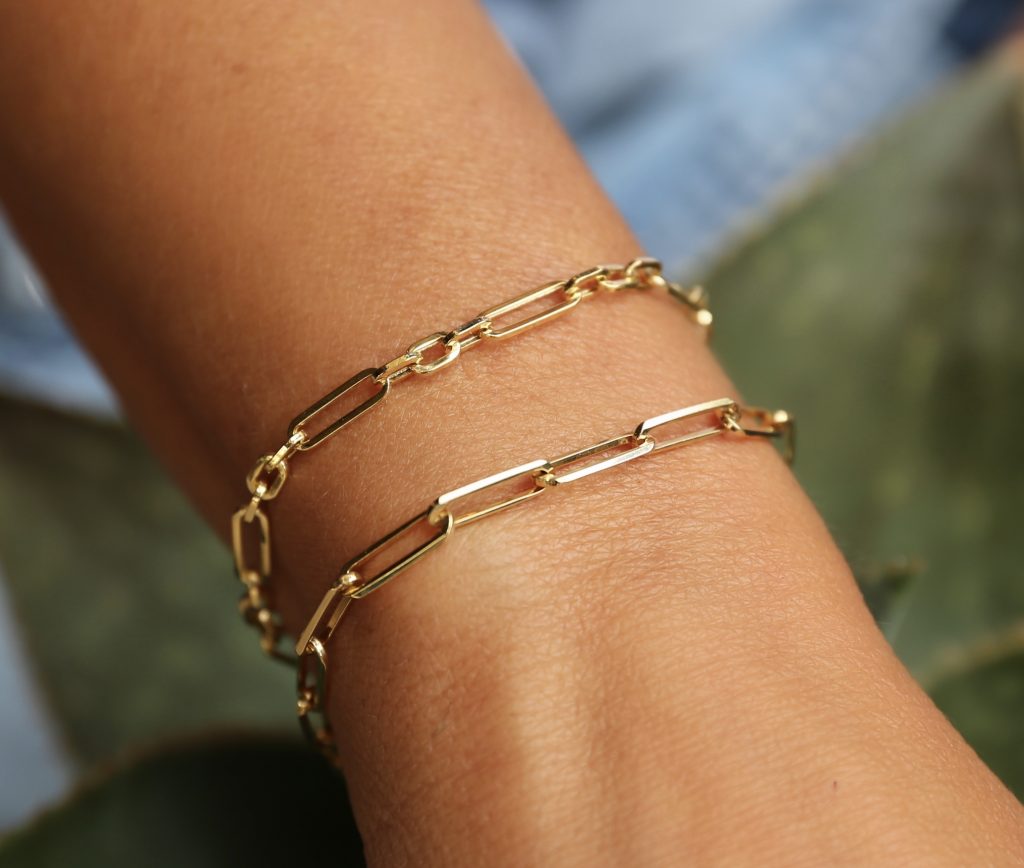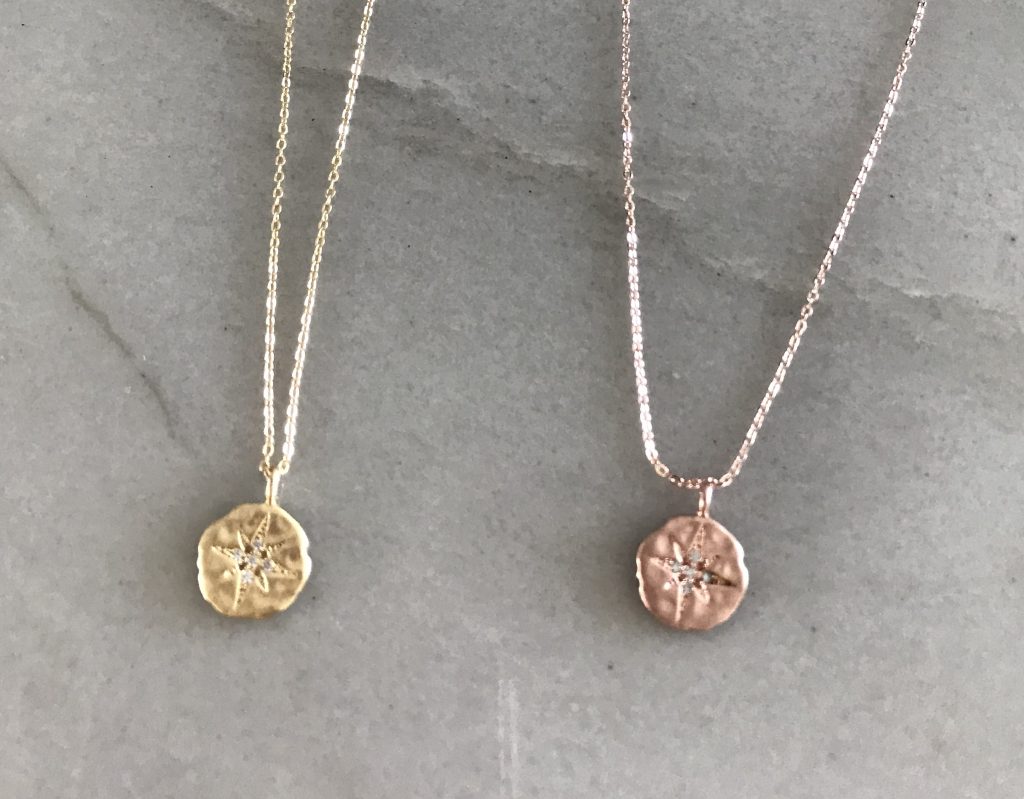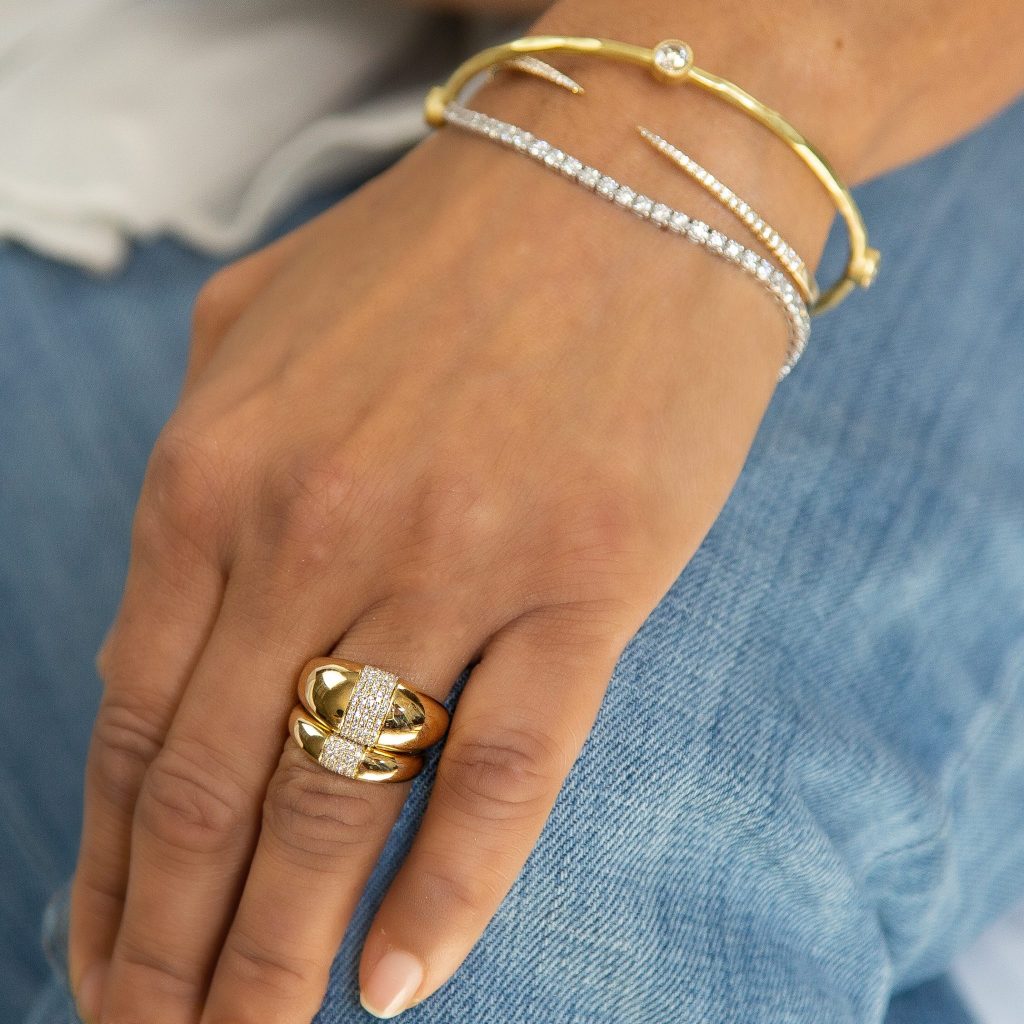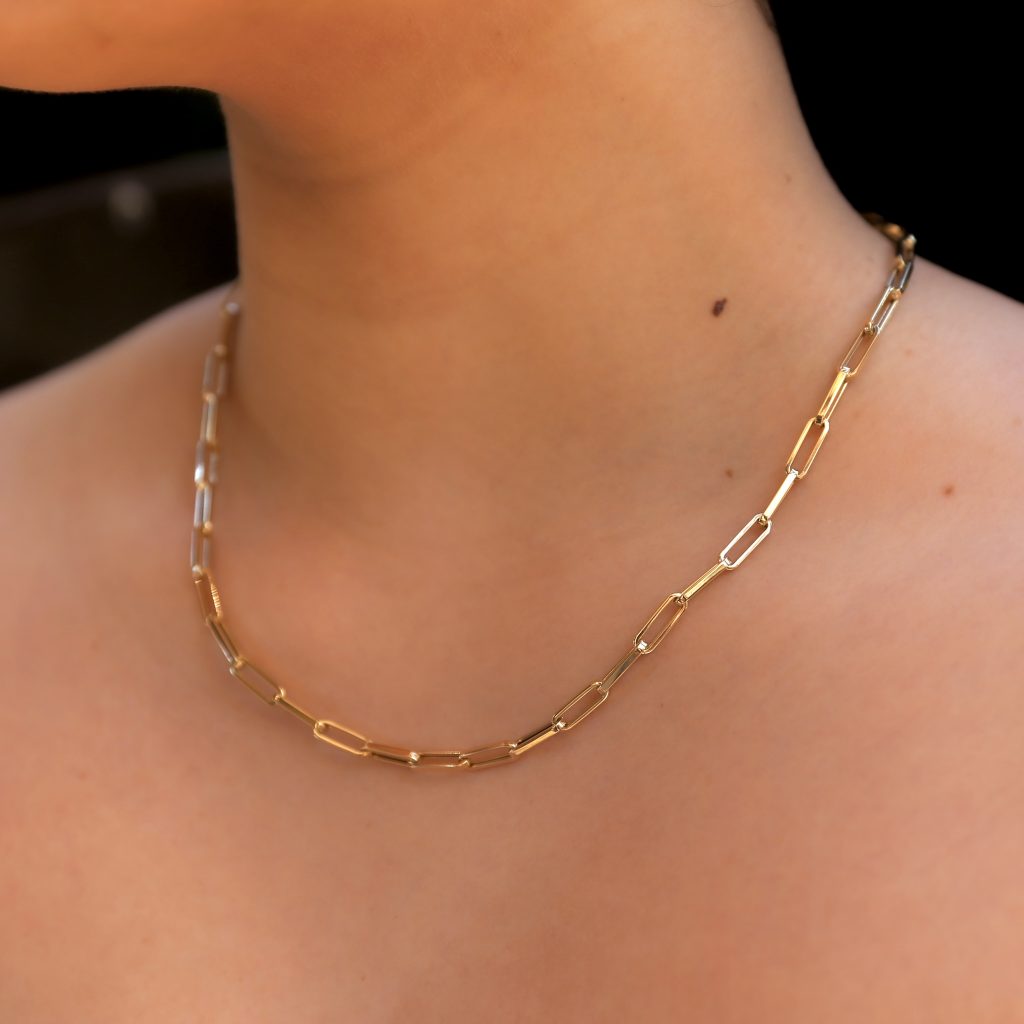Gold jewelry can be misleading with their titles. Types of gold referenced in jewelry are solid gold, gold filled, vermeil gold, gold plated… gold dipped! Confusing, right? I think so! In this post, I will outline the differences for you so you can shop smart when buying gold jewelry!
How many times have you purchased a gorgeous piece of costume or gold plated jewelry to find that it loses its luster after just a few times wearing it? Usually, the price will indicate its quality.
If you find a stylish piece that you love and don’t mind it only lasting for a season or two, that’s great! Sometimes that’s all we’re looking for to boost the look of an outfit.
The purpose of this post is to educate you on what to look for when you want something that is more durable.
Types of gold jewelry
In its most pure form (24k) gold is soft, almost orange in color, and too weak to work with for jewelry. It is standard to add alloys to create more structure to 24k gold. When mixed together with other metals, jewelry is still termed and known as “solid gold.”
Metals commonly alloyed with gold for jewelry purposes include silver, copper, nickel, iron, zinc, tin, manganese, cadmium, and titanium.
Differences of alloys mixed with gold usually depend on the desired color finish. For instance, silver or nickel mixed with gold makes white gold. Copper mixed with gold makes rose gold, and so on.

Ounce of Jewelry 14k Italian Gold Bracelets
The following lists the percentage of pure gold in the different karats of gold:
14k: 58% gold (most gold jewelry other than special pieces like wedding rings)
18k: 85% gold (much more expensive than 14k and more yellow)
24k: 100% gold (not for jewelry due to softness)
Next Best thing to Solid Gold: Gold-Filled
Did you know gold-filled is a form of gold plating? There is almost double the gold in gold-filled items than found in gold-plated items (I discuss gold-plated below). Both are plated with gold, but the process between the two is very different.
Instead of being dipped in gold like gold plated pieces, gold filled jewelry undergoes a mechanical bonding process that melts a thicker layer of gold onto the base metal. One or more sheets of solid gold (14K, 12K, 18K, etc) is wrapped around a base metal under intense pressure. The gold sheets are effectively “filled” with something other than gold.
Gold-filled items have a much thicker layer and higher quality of gold on them than gold plated. Gold filled will be less expensive than solid gold of course, but will be more expensive than gold plated. By law, gold filled jewelry must contain at least 5% gold by weight.
While gold filled jewelry will maintain its gold cast for longer, it will inevitably discolor over time.
Cheaper than Gold Filled- Vermeil:
Vermeil is a type of gold plating which uses sterling silver as the base metal. Sterling silver is a higher quality of metal than brass or other popular inexpensive base metals used in gold plating. Vermeil is more hypoallergenic and has a thicker layer of gold than regular gold plating (but not as thick as gold-filled), which is why businesses will stress the name when referring to their gold plated products. Vermeil uses over 2 microns (.002 mm) of gold plating over sterling, vs standard gold plating which is less than 1 micron (.001 mm.) However, Vermeil plating will still wear off within 1-2 years.
Cheapest- Gold-Plated:

Does gold-plated jewelry fade quickly? Yes- especially gold plated brass and non-vermeil. Some businesses refer to gold-plated jewelry as gold-dipped or gold-overlay. These are the same things. Gold plated jewelry will most likely tarnish or lose its color within 12 months. Gold plated jewelry consists of an inexpensive metal which is dipped using a microscopic sheet of gold plating (less than 1 micron=.001mm.) Think of it as coat of gold hair spray on cheap metal.
The gold content is less than 1%. While gold plated jewelry may possess the same luster and gold appearance at first, this layer is quick to fade when washed, rinsed, or rubbed too hard. Most fashion jewelry is gold-plated or not plated at all (even gold plated should be made clear and distinguished from regular costume jewelry.)
It’s important to make gold plated pieces last longer, you put them in a closed bag after each wear. And don’t expose them to water or heat!
Conclusion: Solid Gold Jewelry is Best

For my Ounce of Salt jewelry shop collection, I use mostly 14k and 18k gold as precious metals for the pieces in my collection.








Hi 🙂
why could would a bracelet in 14k gold (solid, vintage on Etsy) be around 900 dollars and a similiar one from another designer in 18k gold of around the same weight be 5000 dollars? Are there also differences in the making that could result in a different price? 🙂 this is very confusing to me 💕
1) quality of metal makes a big diff. it can be 14 solid but hollow inside. Check weight.
2) workmanship varies greatly. think of a bad haircut vs good haircut – quality of person doing work.
3) Also, if by machine mass produced vs small quantities which uses different methods – mass is lower qualitity
3) premium for designers